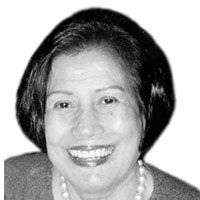Success fish stories

February 17, 2004 | 12:00am
To reverse the fisherfolk’s poverty and remedy the depletion of fisheries and coastal and other marine resources, the BFAR-FRMP was conceived in 1998 as a resource management project to be implemented in 100 towns in 18 critical bays and gulfs of the country. The project covers the provision of alternative livelihood and develop fisherfolk -driven enterprises, and rehabilitating fish habitats through measures such as the establishment of fish sanctuaries and other marine protected areas.
We made a trip to the BFAR-Region 10 office in Cagayan de Oro City recently prior to visiting an exciting project being implemented in a town in Misamis Oriental – modular culture of bangus in cages. We were given facts and figures on the fisheries situation in the region by the director, Arlene B. Pantanosas, and the assistant regional director, David Ernacio. The director, a most able government executive, revealed that during the last two years, the region‚s production of fish and aquatic resources indicates that by Year 2007, self-sufficiency shall have been attained. As of last year, with the production of 101 tons of fish, 98 per cent of the per capita consumption requirement of 26 kilos of fish has been met. The success of projects implemented by the BFAR-10 is due, said the director, to transparency of financial transactions and plans, and the holding of general assemblies with regional executives and fisherfolk.
We proceeded to Talisayan a quiet town 36 kilometers from Cagayan de Oro, to look at the raising of milkfish in cages – a system that can be replicated in selected coastal areas.
The reason for raising bangus in cages is on account of the high demand for the fish which comes only as one species and is scientifically known as chanos-chanos. The program is aimed at increasing milkfish production, sustain milkfish fry requirements, generate livelihood opportunities, provide alternate markets, and
Improve quality of processed products.
Talisayan which fronts Gingoog Bay, is the first batch of municipalities identified as FRMP sites. It is the oldest and "mother of towns" in the Bay area. It became a town in 1854, the year Mt. Hibok-Hibok in Camiguin erupted. It has 18 barangays, 11 of them along the coast. The choice of the barangay of the site – Sitio Guiwanon in Barangay Poblacion – was based on its being protected by the Duka mountain ridge from destructive typhoons.
The cages have been implanted on the seawater almost one kilometer from the shoreline. They consist of four-unit fish-cages with dimensions of 6 meters x 6 meters x 3 meters made of bamboo poles. Bangus fingerlings brought in from Davao are placed on the nets, given commercial feeds, and are harvested after four months, the harvests timed to take place 15 days one after the other.
Since the project was started last year, four harvests have been made, the production going in this order; 488 kilograms from the first cage, 936 k from the second; 906 k from the third, and 880 k from the fourth.
The production is considered successful, and will yield more in the future, giving an extra source of income for the fishermen and their families engaged in the project. The fishermen can continue their deep-sea fishing activities, and benefit from the sales of milkfish in cages. Considering that deep-sea fishing is dependent on weather conditions, the existence of a viable milkfish production will go a long way in helping them augment their incomes.
Dave Ernacio enthusiastically talked about the cooperative spirit engendered by the project. Melchor Gabactulan, said that before, all of the 65 fishermen went out on their own (sa kanya-kanya), but now they‚re working together as a team. They hunted for the right bamboo poles for cages and installed them. They are paying a caretaker to watch the cages. They deposited the money earned from the harvests (almost P300,000.00 ) at the Rural Development Bank of Talisayan as this would go to the purchase of fingerlings and feeds. Every fish was accounted for. Anyone who wanted bangus had to pay for it.
BrandSpace Articles
<
>
- Latest
- Trending
Trending
Latest

























